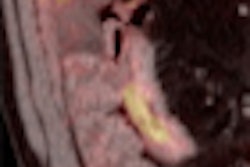Dear AuntMinnie Insider,
A new electronic cleansing technique for virtual colonoscopy taps dual-energy CT's ability to distinguish the materials it scans. According to preliminary research unveiled last month in Switzerland, the method was far superior to (simulated) single-source results, even though the same advanced image-processing algorithm was used for both tests.
If there's a game changer in virtual colonoscopy technology (industry watchers can imagine several), it could be the development of an electronic cleansing method that allows radiologists to read unprepped colon images as accurately and easily as the fully cleansed kind -- sparing patients the uncomfortable prep, and perhaps encouraging more of them to get screened.
Find out what Massachusetts researchers have achieved, and what's up next, in this month's Insider Exclusive story.
How many people die each year because they fail to get cancer screening? A lot, according to a new report from Washington, DC.
And while we're talking technology, radiologists are happy to see computer-aided detection (CAD) systems advance to the point where they can challenge human readers in detecting colonic polyps. But if human readers have to confirm findings from one dataset -- prone or supine -- with another dataset, why shouldn't CAD systems be subject to the same requirement before calling something positive? Researchers from the U.S. National Institutes of Health made their CAD software jump through some extra hoops in a story you'll find here.
Tackling a malady that can affect the large and small intestines, another study found PET/CT to be helpful in assessing Crohn's disease severity. Beyond what can be accomplished with CT, the study found that PET might be a reliable objective method for quantifying the activity and severity of Crohn's, according to the story by staff writer Wayne Forrest.
Meanwhile, researchers from Japan are hoping to automate the difficult and time-consuming diagnosis of Crohn's with a CAD scheme that looks for the hollows that may represent erosions in the intestinal mucosa. Find out how they did it here.
Have you ever wondered how much CO2 gas patients receive during automated colonic insufflation, and how gas volumes relate to distention? Researchers from Ireland have looked into it. Find out more by clicking here.
Finally, what to do with all of the kidney lesions detected at routine virtual colonoscopy screening? Usually not much, say researchers from Wisconsin, who looked at 3,000 patients. Get their recommendations here, and be sure to scroll down for more stories.
For the latest news in VC, wherever it happens and whoever makes it, we invite you to visit your Virtual Colonoscopy Digital Community.




















